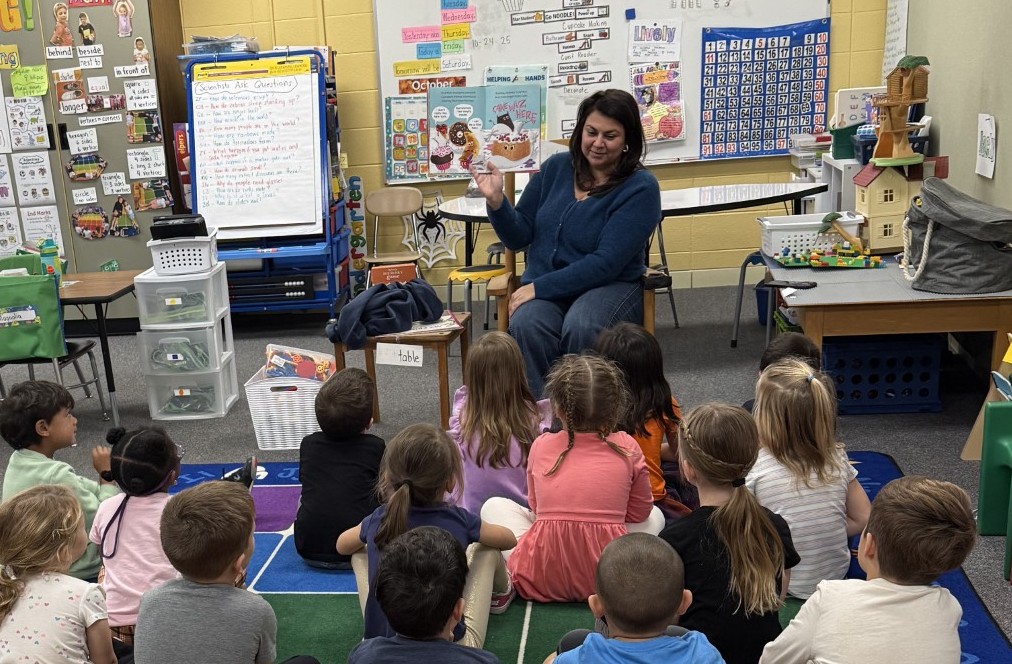DAILY INSIGHT: The obituary of the student desk: 1887-2013
By Carl Hooker, CIO Advisor
The student desk (known by several aliases, most notably the classroom desk) died today when teachers at Bridge Point Elementary school in Austin, TX discovered that learning could happen in a variety of spaces that no longer necessitated its use. "We just feel like kids in this new mobile age don't need to be confined to a small, uncomfortable desk," said one teacher who chose to remain nameless for the purposes of this obituary.
Student desks had a rich history in education. Descended from its "parent" Anna Breadin, who is credited with "birthing" (designing and patenting) the student desk in the late 1880s, the student desk really found a moment of growth and boom during the 1940s. In this Industrial Age, when the need to put things in neat rows was prevalent, learning needed to take place in much the same way as factory assembly lines. Why would students need to move around the classroom? The only time students need to move is to go to the bathroom and you better really have to go because it entails carrying around a large wooden key chain that says hall pass.
The student desk had a lifelong fascination with putting students' rear-ends to sleep, a trait it mastered by the mid-1950s. The '50s were a time of transformation for the student desk's life as it became a tool for protecting students during the "duck and cover" days of Cold War-era America. The student desk came in all shapes in sizes, especially by the 1960s, a time of cultural change in our country. Tie-dye models and desks made from hemp would be built and later destroyed during this time, but one thing remained constant—their severe lack of mobility and comfort.
Through the decades the student desk persevered through tough times, like the "Pencil graffiti" years of the 1970s when students felt like its top was their own personal canvas. The 1980s were no easier for the life of the student desk as numerous spit-puddles attacked their tops by sleeping, drooling teens (a trend made popular as witnessed at the :52 second mark in this scene from Ferris Bueller's Day Off.)
Despite these rough times, the student desk maintained its dominance in the American school system. Indeed, it seemed like nothing could stop the proliferation of the standard student desk in our school systems until the dreaded 2010s. This was the beginning of the end for the student desk. This dark time in the desk's life began innocently enough. Schools were looking for ways to get more access to learning in the hands of kids. While this seemed like a novel idea to the desk, one that would pass in time (like those 1:1 Lava Lamp days of 1968-69), this concept seemed to have staying power. The last few years of the desk's life would be a blur. Students began to come to class with some smartphone thingy and schools were even issuing tablets to kids. The student desk was no longer needed for physical support as it was in the past.
As preposterous as it sounds, this new idea of learning with mobile devices also meant that the desk's other primary strength (its ability to create neat rows) was no longer a necessity. Students needed to be able to move around and work in a variety of ways: individually, in small groups, or as a whole. The teacher no longer need to relay information down the rows; instead, learning could happen anywhere and everywhere in the classroom.
Tools and ideas to transform education. Sign up below.
Depressed and no longer needed, the student desk ended its life by throwing itself into a giant wood-chipper behind the school. The desk is survived by aged relatives like the pencil, the paper notebook, and as of this writing, the paper textbook (which is currently on life support in a Santa Monica area hospital). In lieu of flowers the desk asks that you plant a tree in its honor for the wood that was used to make the desk and offer a donation to the Chiropractors Helping Ailing Inflamed Rears Society (C.H.A.I.R.S.).
Finally, the family asks that in honor of the student desk that you write your school board and administration to rid classrooms of its kind. It's time to move on, people.
For more in-depth ideas of what the classroom sans student desk looks like, see this post on the BPE Bobcat blog. Also see pictures below of classrooms by two Bridge Point Elementary teachers and watch this news clip recently released following the demise of the student desk.
Carl Hooker is director of instructional technology at Eanes ISD in Texas and blogs at Hooked on Innovation, where this is cross posted.
